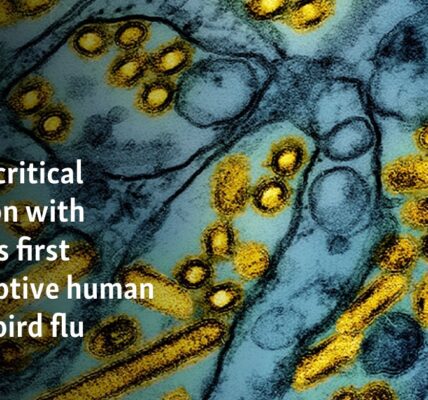The number of syphilis cases in the US has increased in 2022, reaching the highest level in 70 years.
 new york —
new york —
The prevalence of syphilis in the United States continues to increase, with a 9% rise in 2022 according to a recent report by the federal government on sexually transmitted diseases among adults.
However, there is some surprising positive information: For the first time in ten years, there was a decrease in the number of new cases of gonorrhea.
According to the U.S. Centers for Disease Control and Prevention, there has been a 9% increase in syphilis cases while gonorrhea cases have decreased by 9%. However, it is currently uncertain if this indicates a new trend for the latter.
The main focus is on syphilis, which is not as prevalent as gonorrhea or chlamydia but is deemed more hazardous. A total of 207,000 cases were recorded in 2022, the highest number in the United States since 1950, according to data released on Tuesday.
According to CDC officials, although the virus still has a significant impact on gay and bisexual men, it is also spreading among heterosexual men and women and is now affecting newborns.
Syphilis is an infection caused by bacteria that may initially appear as painless sores on the genitals, but if not treated, can result in paralysis, hearing loss, dementia, and potentially death.
The number of new cases of syphilis in the United States significantly decreased in the 1940s due to the widespread availability of antibiotics, reaching its lowest point in 1998.
Out of the 2022 cases, approximately 59,000 were caused by the most contagious types of syphilis. Among these cases, around 25% involved women and another 25% involved heterosexual men.
Dr. Philip Chan, a professor at Brown University and the chief medical officer of Open Door Health, a healthcare facility for the LGBTQ+ community in Providence, Rhode Island, believes that there may be an unaware spread of this issue among the cisgender heterosexual population due to a lack of testing and attention towards it.
The data presented in the report indicates an increase in rates of the most contagious forms of syphilis, not only nationwide but also among various racial and ethnic groups. Among these groups, American Indian and Alaska Native individuals had the highest rate. South Dakota had the highest rate of infectious syphilis at 84 cases per 100,000 people, surpassing all other states and being more than double the rate of the second-highest state, New Mexico.
According to Dr. Meghan O’Connell, the chief public health officer at the Great Plains Tribal Leaders’ Health Board in Rapid City, South Dakota, the rise in cases in South Dakota can be attributed to an outbreak within the Native American community. The majority of the cases were among heterosexual individuals. O’Connell also mentioned that access to STD testing and treatment was restricted in remote tribal communities and worsened during the pandemic.
Last year, the U.S. Department of Health and Human Services formed a task force specifically targeting the spread of syphilis. The task force’s main focus was on locations with the most prevalent rates of the STD, including South Dakota, 12 other states, and the District of Columbia.
Additionally, the study examined the prevalent sexually transmitted infections of chlamydia and gonorrhea.
The number of Chlamydia cases remained steady between 2021 and 2022, with an average of 495 cases per 100,000 people. However, there was a decrease in cases among young men and women in their early 20s. Similarly, the number of gonorrhea cases also decreased significantly among women in their early 20s.
It is unclear to experts why there was a decrease in gonorrhea rates, as it was observed in approximately 40 states. This suggests that the cause of the decline affected most of the country. Due to disruptions in STD testing caused by the COVID-19 pandemic, officials believe that this is the reason for the decrease in chlamydia rates in 2020.
In 2022, Dr. Jonathan Mermin, director of the CDC’s National Center for HIV, Viral Hepatitis, STD and TB Prevention, stated that there may still be ongoing improvements and adjustments in testing and diagnoses.
Mermin stated that they are pleased with the significant decrease in the gonorrhea rate, but it is important to investigate the cause and determine if this trend will persist even after the pandemic.
Source: voanews.com




